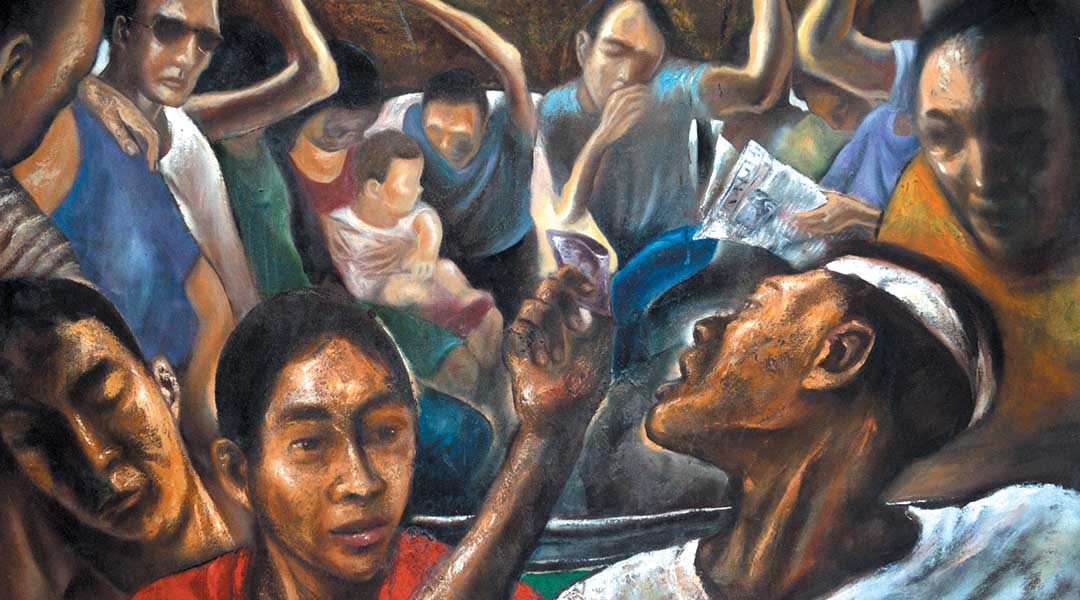
Morality Tales: The quintessential art of Manny Garibay
“Art’s capacity to comment on everyday life is sharpened by man’s need to converse, and to convince,” Ramas-Cañete says. The current pandemic has widened the role of art in addressing the pressing issues of our society, particularly those that have been neglected for centuries. We revisit some of the best works of artist Manny Garibay, whose paintings depict the combination of moralities and immoralities in everyday Filipino life.
Religious art is the oldest such attempt at artistic commentary, weaving virtues and vices into cautionary tales of how humanity must act to improve life on Earth, or else risk their undoing in the afterlife. Christianity, in particular, has been strong in this aspect. In paintings, mosaics, and sculptures from 4th century Rome to 21st century Africa, the exemplary life of Christ has been depicted as a model of selfless humanism transformed into divine interventions in everyday life.
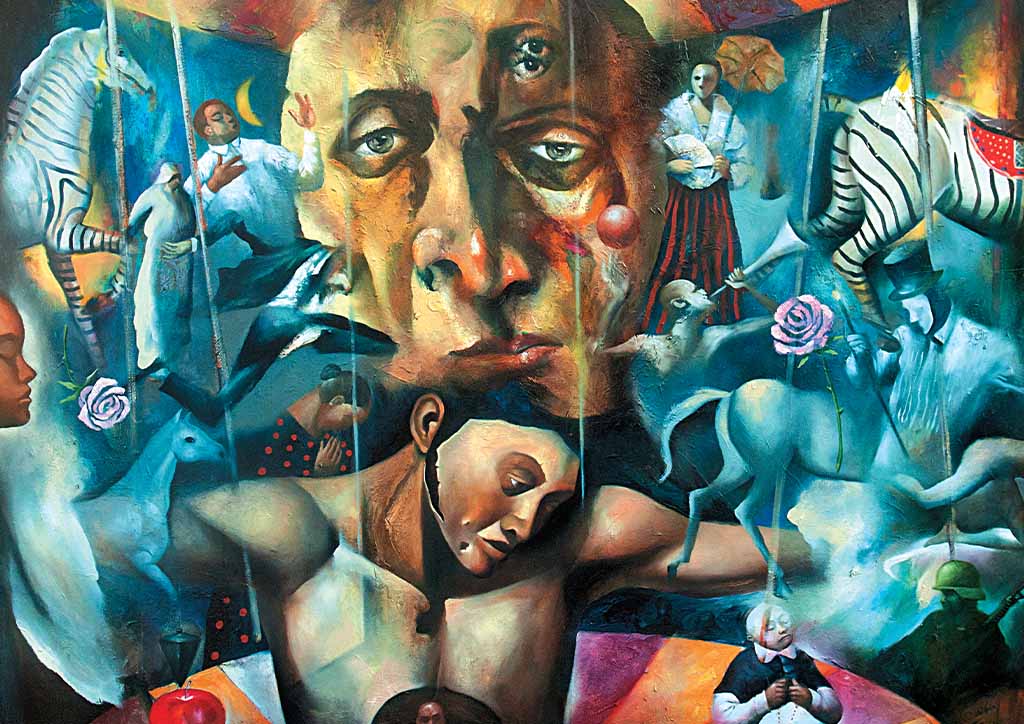
Emmanuel “Manny” Garibay (born 1962 in Kidapawan, North Cotabato), hails from this tradition. The son of a Methodist preacher, Garibay has combined a commitment of Christian mission with a militant understanding of social wrongs, which he gained while studying at the University of the Philippines in Diliman, and actively participating in the protest movement of the late 80s. Since the 90s, he has consistently used his art to remark on the everyday activities of his fellow Filipinos.
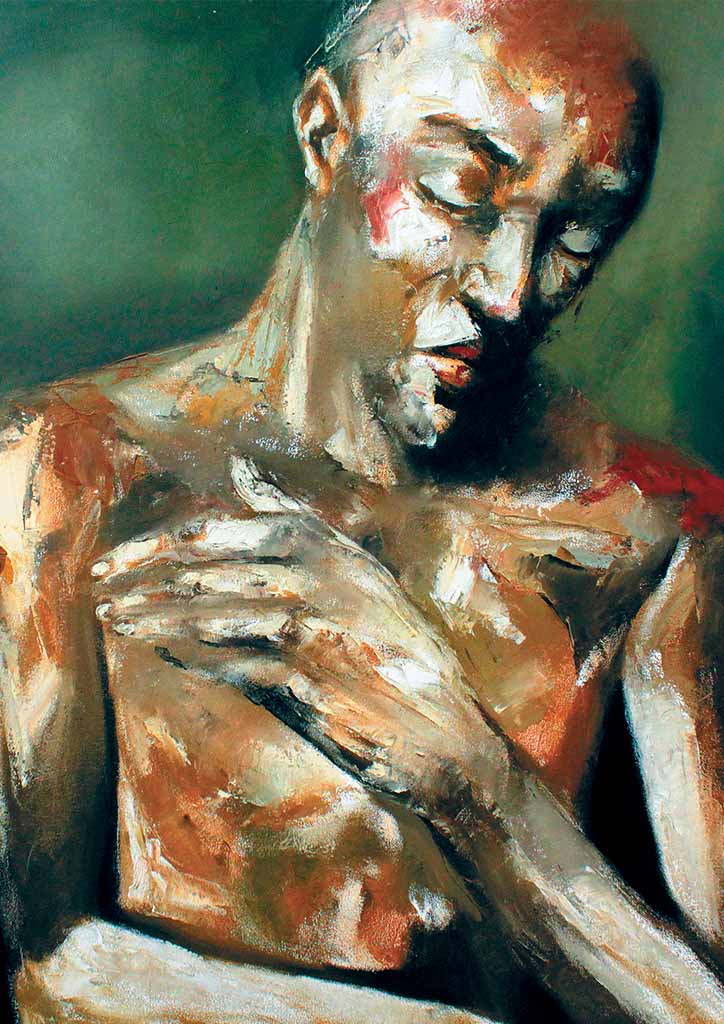
In Garibay’s recent work, cities are infernal sites where violence, corruption, and disregard for the basic dignity of humanity become catalysts of mass evil. One can see this in Sangandaan (1993), where the ubiquitous PUJ is a vehicle for torment—an unjust purgatory. On the other hand, the city is also a source of inspiration, as can be seen in Circulo (2009), where a boy leaps backward from a jeepney in carefree frolic—a metaphor, perhaps, for innocence as a vehicle for change.
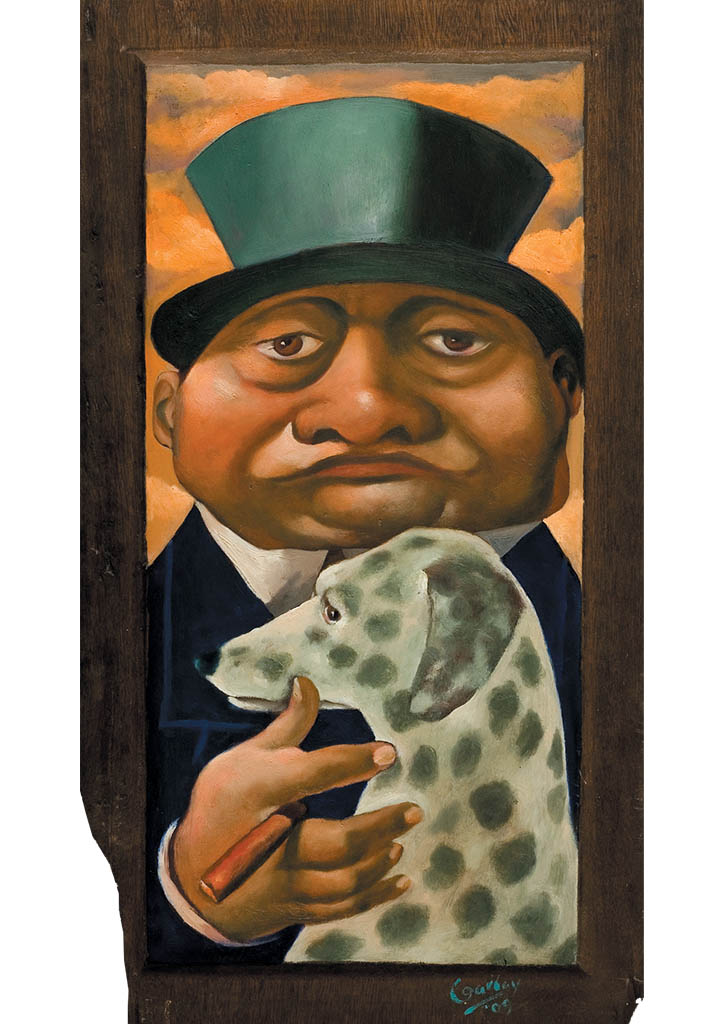
Perhaps the most damning visions of daily immorality are found in Garibay’s depictions of politicians. Tapat (2009) shows a politician with his lapdog supporter. Payaso (2012) pictures the Filipino doublespeak for a blankly entertaining political campaigner. Garibay’s vision of the evils of politics reaches a climax with Perya (2009), where the voter becomes a crucified figure to the Politician as False Prophet. And in Pagdating (2009), Christ’s coming on Judgment Day is greeted by a group beer-toting politicos, all smirking knowingly as if redemption can be had for a price.

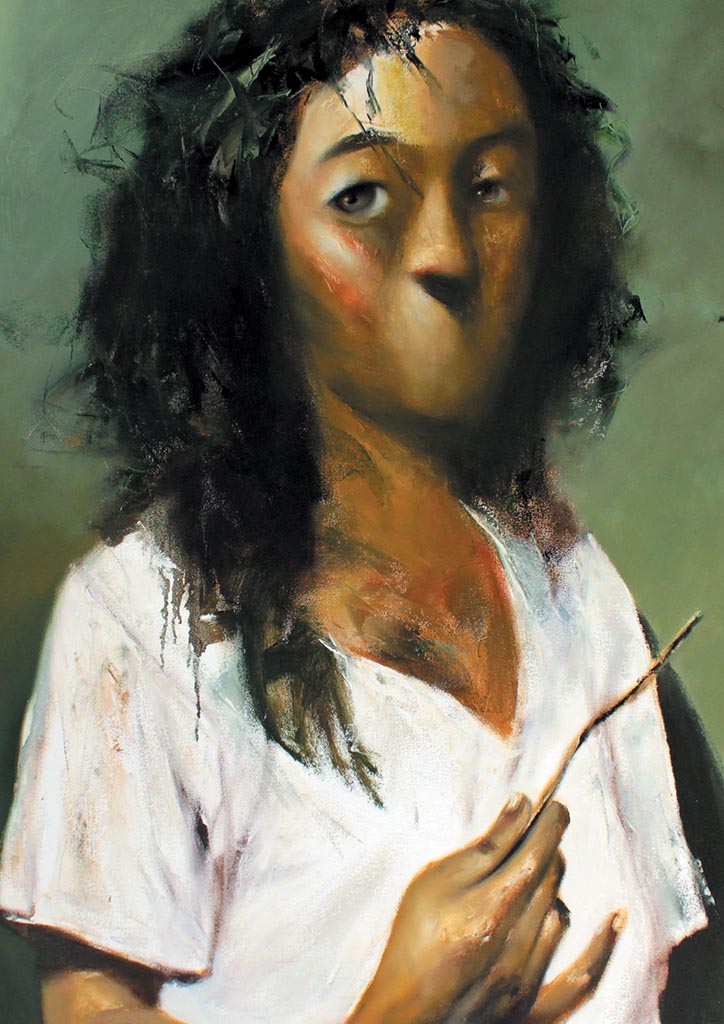
In Sisa and Sanga, Garibay personalizes the heroism of women as silent victims of violence. In Dama, he clothes a naked beggar with quiet nobility. And in his Self-Portrait (2013), Manny Garibay depicts himself frankly, holding up a camera in front of a mirror. Reality is thus captured retrospectively and enlarged to form not just a commentary of every day, but a realization of obvious truths.
This article first appeared on BluPrint Volume 5 2013. Edits were made for BluPrint online.
READ MORE: And the rest is history: The Art of Don Salubayba


